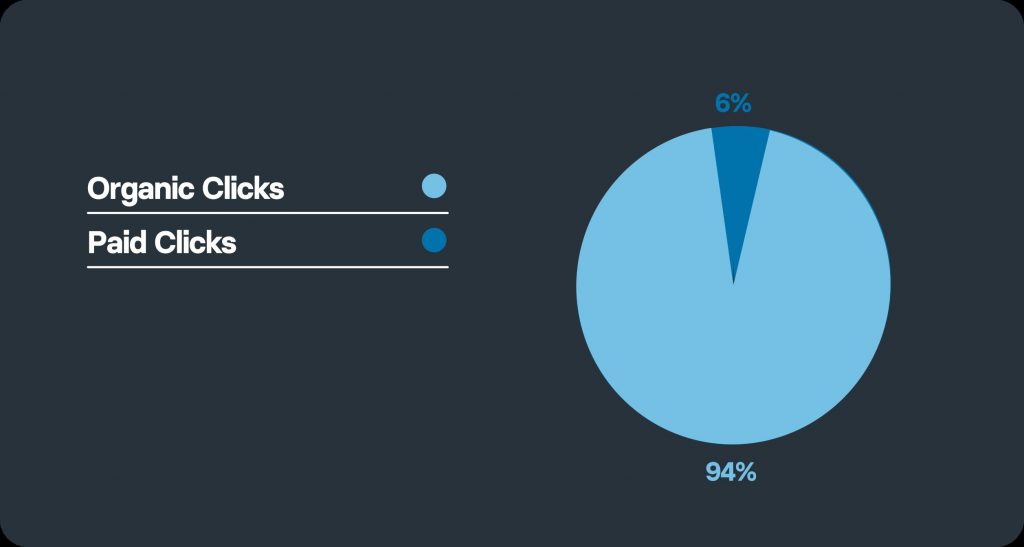If the majority of your leads come from just one channel, or even just one page on your website, you’re taking a major risk. At Redefine, we’re always surprised by how many businesses put all their marketing eggs into one basket. And we get it: if something isn’t broken, why change it?
But when your growth depends on a single tactic, it only takes one shift in your industry, algorithm, or platform to knock everything off course.
As an organic search engine optimization company, we encourage brands to invest in growth strategies in marketing that don’t rely on a single channel or source of traffic. These strategies build long-term momentum and reduce your vulnerability to sudden changes in the digital landscape.
Benefits of a diverse strategy
Digital marketing is constantly evolving. We’re all trying to stay ahead of the digital winds, whether that means keeping up with algorithm updates or adapting to new technologies that make certain advertising methods irrelevant. If your business is generating leads through a one-trick pony, it’s time to rethink your approach.
An organic marketing strategy revolves around content that you can publish freely, which lives online indefinitely. Unlike paid ad campaigns that disappear the moment your budget runs out, organic content builds value over time. It works while you sleep, generating leads long after it’s been published.
And here’s the kicker: 94% of Google clicks go to organic results. Paid ads capture just 6%. So even if you’re paying for the top spot, someone can outbid you tomorrow – and your visibility disappears. Organic rankings, on the other hand, stick around. That’s why it makes sense to invest in the 94% that doesn’t require a constant cash infusion.

We’ve seen a strong organic strategy completely shift the trajectory of a business. And the best part? Organic wins tend to last. They create long-term momentum, not just short-term spikes.
Organic marketing matters more than ever
Paying for ads will always be a short-term tactic. Ads serve a purpose, and the best marketing campaigns use both paid and organic strategies effectively.
But paid leads require a constant budget to keep them flowing. Once the budget stops, so does the traffic. Organic content, on the other hand, has a much longer lifespan. A well-written, useful piece of content can rank on Google for years as long as it remains relevant and is regularly updated.
On top of that, paid ad campaigns aren’t what they used to be. Competition is higher, costs are rising, and the days of putting in one dollar to get two back are long gone. In fact, some studies show that leads generated from the work of an organic search engine optimization company cost as little as half as much as paid leads across a variety of industries.
Plus, as AI continues to reshape search engines, zero-click results are becoming more common. Drops in click-through rates are happening across the board. That’s why it’s more important than ever to go beyond basic SEO. Email marketing, social media, video content, and podcasts all fall under organic marketing – and each one gives you a new way to meet your audience where they’re already spending time.
If you’re still relying on a one-channel strategy, you’re not only leaving potential leads on the table, but you’re also putting your business at risk.
The risks of a one-channel strategy
If you’re an investor, you’d never put all your resources into a single prospect. Marketing works the same way. Even the most successful marketing channels evolve. If you’re not staying ahead of the game, you will fall behind.
As an organic search engine marketing company, Redefine specializes in Content and SEO, but even we’d never tell you to put all your eggs in that basket. Any marketing professional claiming you only need one form of organic marketing isn’t setting you up for long-term success.
Relying solely on paid ads? You’re vulnerable to budget cuts, rising CPCs, and unpredictable algorithm changes from platforms like Meta and Google.
Relying only on SEO? What happens when a Google update hits, or a competitor leapfrogs you in rankings?
The reality is that search is volatile; the average top 10 result on Google is over two years old, which means sustained effort is non-negotiable. And with 33.6% of U.S. internet users using ad blockers, paid reach is already limited.
A balanced, multi-channel strategy is the safest bet, just like a smart investment portfolio.
What diversification looks like in practice
So what does diversification actually look like in practice? It starts with understanding where you’re at.
Audit your current performance.
Before you expand, you need to know where your organic traffic is coming from and where it isn’t.
Are most of your leads coming from blog posts? Or maybe LinkedIn? Do you have an email list you have never touched? Use tools like GA4, Search Console, LinkedIn Analytics, and email platform reports to get a clear picture of your current distribution. Identify the top 10 pages that bring in organic traffic, and see what channel or format they fall under.
If 70% of your traffic comes from three pages and two keywords, that’s not a sign of strength; it’s a sign of fragility.
Set clear goals for each organic channel.
Each channel has its own strengths, and your goals should reflect that. A blog is great for driving top-of-funnel discovery and SEO authority. Email is perfect for retention and re-engagement. Social is your fast lane for brand visibility and community building. Don’t just publish everywhere blindly; use each platform intentionally based on what your audience expects and how they behave on it.
Prioritize based on audience behavior, not just traffic volume.
Just because a blog post gets the most traffic doesn’t mean it’s your most valuable channel. Maybe your podcast only gets 200 downloads, but they’re from your exact ICP, and they convert at 5x the rate of blog readers. Traffic isn’t always the goal; qualified traffic and genuine engagement is. Let your audience guide your next move. Where are they already spending time? What type of content do they interact with the most?
Experiment and measure consistently.
Diversifying doesn’t mean launching on five new platforms all at once. In fact, we don’t recommend that. Instead, pick one new organic channel to explore this quarter. Maybe it’s launching a monthly newsletter. Maybe it’s repurposing blog content into short-form video. Maybe it’s hosting a live Q&A with your founder. Test, measure, and adjust. Tools like GA4 and Search Console can help you track performance, while social and email analytics give you a direct line into audience behavior.
Diversification future-proofs your growth
When your entire strategy hinges on a single tactic, you’re not building a system, you’re betting on luck. And in marketing, luck runs out fast. We’ve seen it time and time again, whether it’s an SEO-heavy site that tanks after an algorithm update, or a business reliant on paid ads that hits a budget freeze and loses all of its leads overnight.
Diversification builds resilience.
It allows you to ride out the changes, whether it’s shifts in search behavior, privacy updates, or platform saturation. But more than that, it builds reach. It strengthens your brand equity. It makes sure your voice is heard across multiple touchpoints, not just one.
Start small.
Pick one new organic tactic to explore this quarter. Track it. Improve it. And before you know it, you’ll have a strategy that’s not just generating traffic… but lasting impact.
Work with an organic search engine optimization company
Feeling overwhelmed? Take a breath! Diversifying your organic strategy can be a long, complex process, but it’s highly doable if you take it piece-by-piece. If you’re truly not sure how to get started, an organic search engine optimization company like Redefine can help. Contact us today for a free discovery call.




